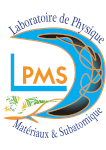Professor Anna ZAWADZKA
Doctor Anna ZAWADZKA was born in Kielce. She received an M.Sc. degree in Physics, specialization in Microelectronics from the Nicolaus Copernicus University (Toruń, Poland) in 1996 and obtained her PhD degree in Physical Sciences, specialization in Atomic and Molecular Physics in 2001. Her Ph.D. thesis concerned the multiphoton ionization process enhanced with two-electron excitation in calcium atoms. During her Ph.D. research, she joined the group of Physical Bases of Microelectronics at the Faculty of Physics, Astronomy and Informatics at the University of Toruń. In 2003-2004 she completed a postdoctoral fellowship at Radboud University in Nijmegen in the Netherlands. During this period, she worked in the Department of Molecular and Laser Physics in Professor D. Parker's group and dealt with velocity-map imaging phenomena. From the beginning of her scientific activity, her work focused on the subject of the interaction of strong electromagnetic radiation with matter. After returning from the Netherlands, she took up materials engineering with a special focus on thin films and their practical applications. Doctor ZAWADZKA obtained her habilitation in 2019 at the AGH University of Science and Technology in Krakow POLAND in the field of technical sciences, specializing in materials engineering. The subject of the habilitation thesis was related to experimental methods of fabricating and testing the properties of thin films and thin-layer nanostructures. In 2020, she was employed as a Professor at the Nicolaus Copernicus University in the group of research and teaching staff. Currently, she is also the head of the laboratory and the team of Microelectronics and Laser Ablation at the Institute of Physics, and the laboratory and the team of Low-Dimensional Structures at the NCU Interdisciplinary Center for Modern Technologies. Doctor ZAWADZKA is a scientist specializing in materials engineering, in particular, the fabrication of thin films and nanostructures and the study of their properties in the processes of interaction with external radiation. She has extensive experience in the fabrication of multilayer structures for applications in micro-, optoelectronics and photovoltaics as well as diagnostics and investigations of NLO effects using short pulse lasers. Doctor ZAWADKA is also involved in research on nonlinear optical materials (NLO) and effects in nanophotonics, biophotonics and molecular photonics. She has carried out groundbreaking research into self-assembly within nanostructured thin films containing phthalocyanine and its derivatives. Her scientific publications concern both the technological aspects of thin film deposition processes and the study of their optical, electrical and structural properties. She has published over 100 articles in international scientific journals. She has more than 800 citations and her H-index is currently equal to 17. She was a guest editor of 4 special issues of the scientific journals related to materials engineering, properties and applications. She serves as a reviewer for more than 30 peer-reviewed journals. In addition, Dr. ZAWADZKA was a co-organizer, member of the scientific or advisory committee of many scientific conferences (AMPSECA, ICFPAM and ICTON), and still supports the organization of conferences for young scientists at her alma mater (Copernicus Doctoral Seminar) with over 300 participants per year. Recently, the prestigious US University of Stanford ranked the distinguished Doctor ZAWADZKA among the 2% of the best personalities of scientists who made the greatest impact on the scientific community in 2019 in their field. The Stanford classification was based on data from Scopus and the Web of Science.







